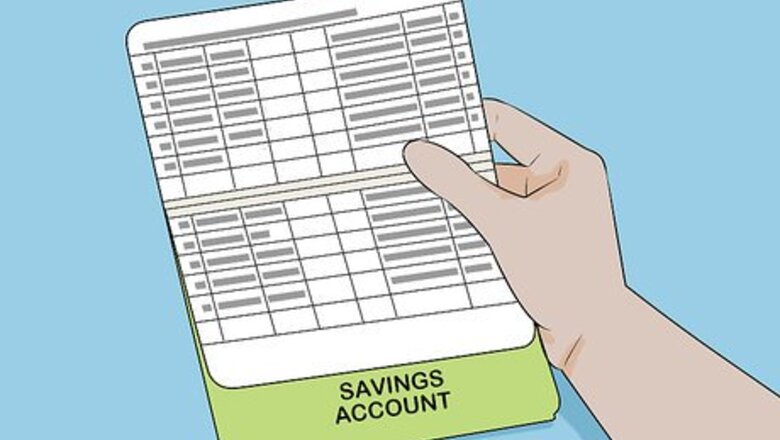
views
Withdrawing from a Traditional Savings Account
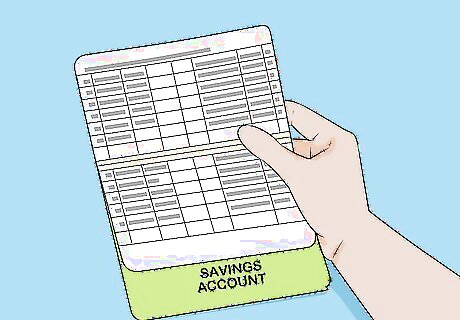
Know your traditional savings account. These are sometimes called passbook savings accounts or share savings accounts. Such savings accounts usually have low or no balance requirements, and thus correspondingly low interest rates (but usually higher than checking accounts).

Contact your bank or visit its website to determine any withdrawal limits for your account. Check on your options in regards to transferring funds between multiple savings accounts or to a checking account, as well as any dollar amount restrictions per type of withdrawal. In the United States, under the Federal Reserve’s Regulation D Requirements, there is a federally enacted limit of 6 withdrawals per month. This requirement was established during the Great Depression of the 1930s to help ensure stability in funds held by banks. There is room for variation in bank policies regarding this limit, so know those of your bank. This limit on withdrawals is one of the largest differences between savings and checking accounts. Basically, you trade a lesser amount of accessibility to your funds for a (normally) higher rate of return on your funds. Note also that these Regulation D requirements also cover the internet savings accounts and money market accounts discussed below.
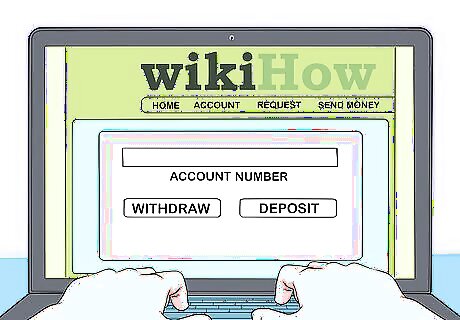
Access your account online. This is the best option if you want to withdraw from your savings and deposit it into your checking. Many banks consider these transfers rather than withdrawals because they are not giving money to a third party. It stays within their bank for at least a short time. Most bank websites make transferring funds between accounts held at that bank easy. Indicate the amount of money you would like to transfer from your account, and the date when you would like it to transfer. Many transfers between accounts can happen immediately.
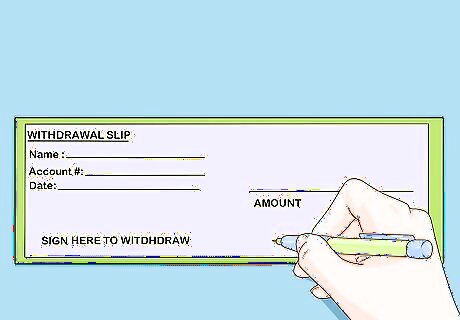
Go to your bank if you do not have a checking account that is linked to your savings account. Fill out a withdrawal slip indicating the amount you would like to withdrawal from your savings account. The teller will most likely ask you to show some photo identification, your savings account number, and possibly enter a password or pin number
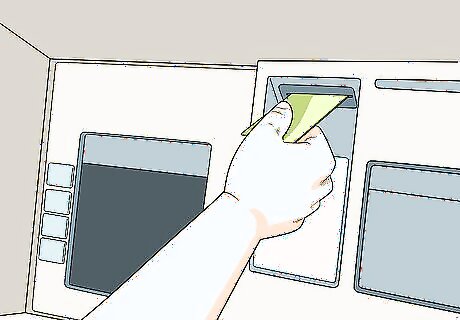
Use your debit card at an ATM to withdraw funds from your savings account, if permitted. This option is becoming more common. Basic savings accounts are often linked to checking accounts, so many major banks allow you to withdraw at the ATM. Insert your ATM debit card, enter your pin, select savings account, and enter the amount you would like to withdraw. With all of these methods, keep in mind the limit of 6 withdrawals per banking period (in the U.S.). Bank terms and conditions regarding withdrawals can change, so it is always a good idea to check with the bank. EXPERT TIP Benjamin Packard Benjamin Packard Financial Advisor Benjamin Packard is a Financial Advisor and Founder of Lula Financial based in Oakland, California. Benjamin does financial planning for people who hate financial planning. He helps his clients plan for retirement, pay down their debt and buy a house. He earned a BA in Legal Studies from the University of California, Santa Cruz in 2005 and a Master of Business Administration (MBA) from the California State University Northridge College of Business in 2010. Benjamin Packard Benjamin Packard Financial Advisor Expert Warning: After withdrawing money from a savings account, you should aim to leave at least 3 months of living expenses in it. This will keep you covered just in case something unexpected happens in the future and you lose your income source.
Withdrawing from an Internet Savings Account
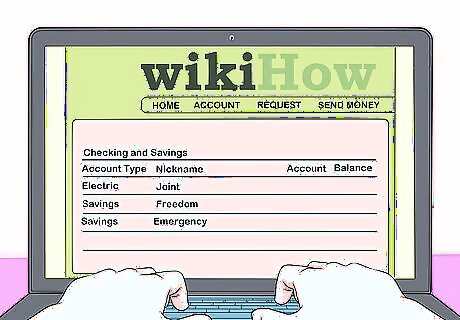
Know your internet savings account. Strictly speaking, they are exactly the same as a traditional savings account, minus the brick-and-mortar bank. Usually, such internet-only accounts can offer higher interests rates because of lower overhead costs (physical bank locations staffed by employees, etc.). If you do not mind the inability to literally walk into your bank and transact business or talk face-to-face with someone about your money, internet savings accounts should be considered. You can still use an ATM if you have an internet savings account. In fact, many internet banks will reimburse you for any ATM fees.
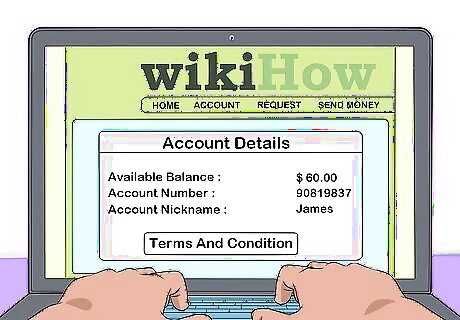
Go online to check your balance and identify withdrawal terms and conditions. If your internet bank makes this process anything less than very simple, you may want to find a new internet bank.
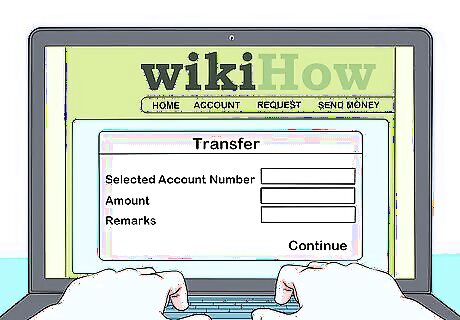
Transfer funds online to a checking account you hold with the same bank. This process should be straightforward and fee-free. If you have a checking account, you will likely be given a debit card, and you may be able to access savings account funds with this card. Check your internet bank’s policies.
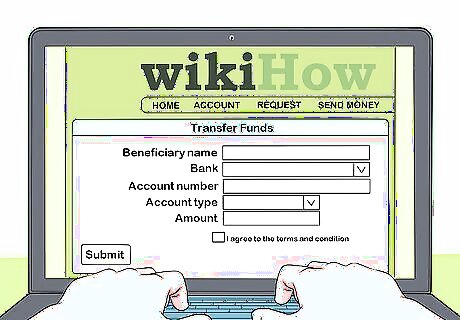
Transfer funds to an account with another bank. You should be able (and may be required) to link an external account to your internet savings account. To make the link, you will need to enter details about your external account (account number, etc.). The linking process may not be immediate, and you may be required to make a small transaction between accounts to prove the connection is legitimate. It is possible, but hardly universal, that you may incur fees from one or both institutions when transferring funds. Keep in mind that the U.S. federal withdrawal limit applies to internet savings accounts as well.
Withdrawing from a Money Market Account
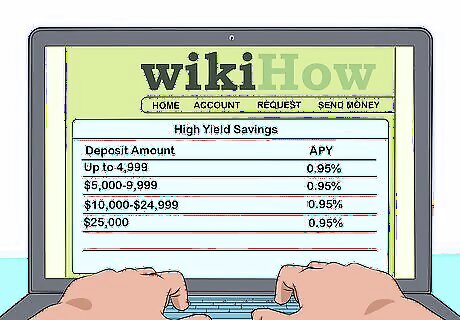
Know your money market account. A money market account, sometimes called a high-yield savings account, generally provides a higher rate of return than a traditional savings account while also requiring a higher minimum fund balance. This account invests in government or company securities and pays interest rates from those investments. It is a completely different account from a money market fund, which is offered by stockbrokers. Like other savings accounts, money market accounts with U.S. banks are FDIC insured, and thus also subject to the six withdrawals restriction. Unlike traditional savings accounts, money market accounts often offer a limited check writing capability.
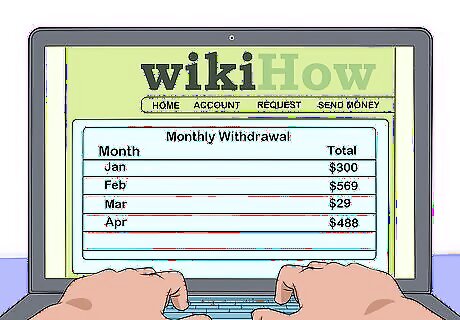
Keep track of your monthly withdrawals and know your bank’s rules and restrictions. Call the bank or read on your bank's website how many times you can withdraw money in a month. These accounts will follow the federal limit of withdrawals, and they will penalize you if your withdrawal takes your account below the minimum account balance.
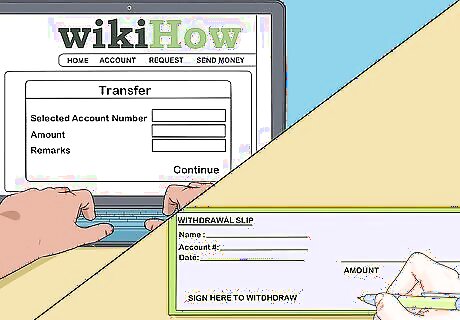
Transfer funds to a linked checking account, online or in person. These may still be seen as withdrawals, even though they do not go directly to a third party site.
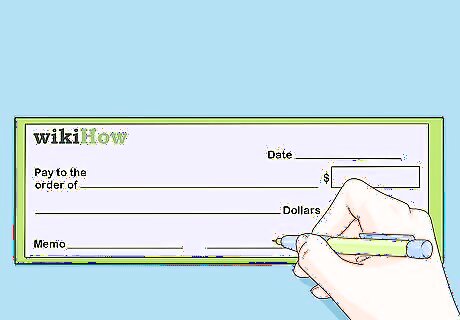
Write a check. Money market accounts regularly supply their customers with checks, placing them somewhere between savings accounts without check-writing ability and checking accounts with unlimited check-writing. They may allow up to 3 checks to be written from the account each month.
Withdrawing from a Health Savings Account
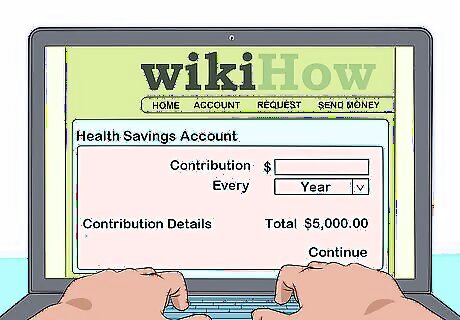
Know your Health Savings Account (HSA). In the U.S. an HSA permits you to set aside money for medical expenses tax-free. The money is not federally taxed upon deposit or withdrawal when used for qualified medical expenses (as determined by federal regulations). More like a savings account than insurance, the account is portable -- it is yours to keep through job changes and the like. Only persons enrolled in High Deductible Health Plans (HDHP), as defined by federal code, can contribute to an HSA, but you can still keep and use the funds even if you no longer are in a HDHP. There are also annual contribution limits for HSAs.
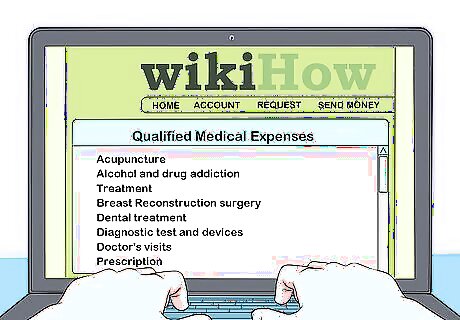
Acquire a list of qualified medical expenses (QME). In the U.S., this information is available through the IRS. You can make withdrawals from your account that are tax free as long as they are used to pay for medical services on this list. Also keep up on the eligibility requirements of HDHPs and contribution limits for HSAs. These can vary year-to-year. Check the IRS for this information as well.

Visit a doctor, as long as their services are on the list. The doctor's visit and any prescribed treatment or medication is a basis for a tax-free withdrawal from this account.
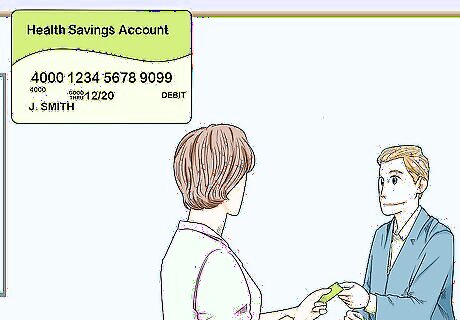
Use your HSA debit card at the physician office or pharmacy. Most health savings accounts provide a branded debit card (Visa, MasterCard, etc.) that works just like any other debit card but is linked specifically to the HSA funds.
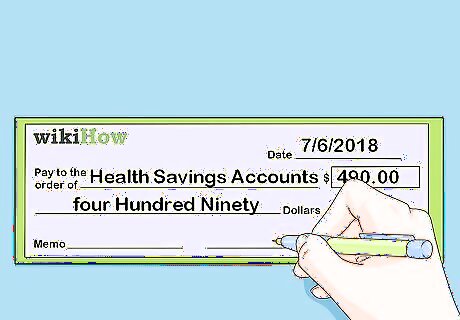
Write a check. Some health savings accounts may still provide checks that are linked to your account. Keep close track of your account balance if writing checks, because you could be subject to penalties for insufficient funds, returned checks, etc.
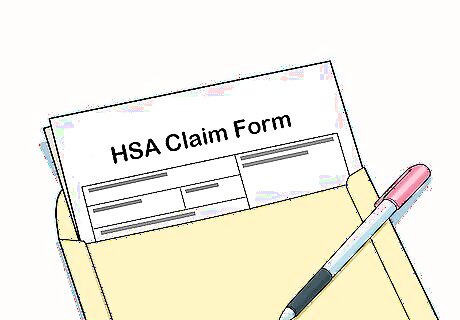
Submit a claim form to your HSA provider for reimbursement. This process is similar to submitting a traditional health insurance claim. Check your HSA provider for details on claim forms, providing receipts, and so on. Use this process if you forget your HSA debit card, discover after the fact that you paid for a qualified medical expense out-of-pocket, are unsure at the time if the expense is a QME, or have insufficient HSA funds to cover a QME at time of payment. Whether using a card, check, or reimbursement form, any money withdrawn for non-QMEs will be subject to income taxes and incur a 20 percent penalty. This penalty may be waived for people over the age of 65.

















Comments
0 comment